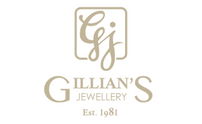- Your cart is empty
- Continue Shopping
Ring Reshanking: Restoring Beauty and Durability
- General Knowledge, Ring, Services
- Posted on
-
by Gillian's Jewellery
- 0 comments

In life’s journey, certain pieces of jewellery become more than just accessories; they transform into cherished keepsakes, encapsulating memories and emotions that span generations. Among these, rings hold a special place as symbols of commitment, love, and personal milestones. However, the passage of time and the consistent embrace of these precious adornments can lead to wear and tear, resulting in weakened bands that require attention. This is where the art of “Ring Re-Shanking” comes into play. This article delves into the significance of reshanking, its intricate process, and why consulting a professional jeweller is paramount to breathe new life into these timeless treasures.
Reasons for Ring Re-Shanking
A ring’s journey often mirrors life’s twists and turns, and over time, the band, which encircles the finger with a steadfast promise, might show signs of wear. The reasons for needing reshanking are diverse, ranging from changes in finger size due to weight fluctuations or pregnancy, to the inevitable wear and tear from daily activities. A once-sturdy band may begin to thin, bend, or even develop visible cracks – telltale signs that reshanking is necessary. These physical manifestations of time’s passage can take away from the ring’s structural integrity and its ability to endure.
The Reshanking Process
The process begins with a thorough assessment and consultation between the wearer and a professional jeweller. This initial step ensures that the jeweller understands the wearer’s preferences and expectations. After assessing the ring’s condition, the jeweller determines the extent of reshanking required.
The heart of reshanking lies in the replacement of the worn portion of the band. The existing shank is carefully removed, while ensuring any precious stones or settings remain unharmed. The jeweller then assists in selecting a new shank, considering factors such as the metal type and thickness. This decision can vary based on the level of wear and the wearer’s desires.
Selecting the new shank is an important decision, guided by factors such as the metal type and thickness. This phase involves choosing whether to pursue a 1/4 shank replacement, half shank replacement, 3/4 shank replacement, or a full shank replacement, depending on the extent of wear. Sizing and fitting are of paramount importance, ensuring that the reshanked ring is not only structurally sound but also comfortable for the wearer. This amalgamation of measurements, materials, and design culminates in the expert craftsmanship of joining the new shank to the ring. Polishing, finishing, and, if applicable, the resetting of stones, elevate the ring’s aesthetic appeal and ensure its wearability for years to come.
Consulting a Professional
Navigating the world of reshanking requires guidance from an experienced jeweller who blends skill with an understanding of the emotional weight carried by these tokens of love and commitment. A professional jeweller possesses the expertise to assess the extent of wear and recommend reshanking when necessary. They guide wearers through the process, ensuring that the finished piece not only gleams but resonates with the memories and emotions it encapsulates. Their involvement in the process guarantees not only a structurally sound ring but also a piece that carries forward its legacy with renewed brilliance.
Final Thoughts
In the hands of skilled craftsmen, the process of reshanking transcends mere repair; it transforms into a rekindling of love stories and cherished memories. By bridging the past and the present, reshanking breathes life into rings that have weathered time, allowing them to adorn future generations with the same fervour as they did in their prime. This process, grounded in tradition yet adaptable to modern preferences, encapsulates the caring essence of preserving memories while embracing the journey that lies ahead. As you embark on the journey of ring reshanking, may each restored ring be a beacon of love, endurance, and the timeless beauty that connects generations.
